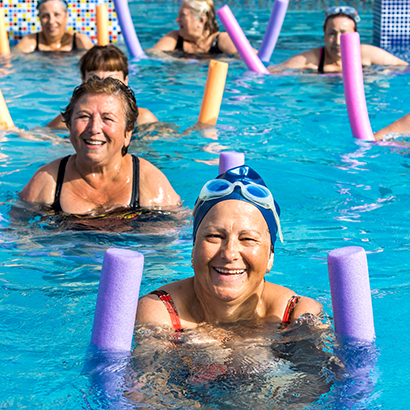
When was the last time you stopped to imagine a typical day in your future retirement? This week several of my colleagues and I had this discussion (not something a bunch of millennials often discuss) and it was very enlightening. Although each of us had unique thoughts about how we would spend our time driving a wine-a-bago across country, becoming a YouTube star, or being a snow bird on Florida’s beaches, similar themes emerged. We all had the desire to be independent, contribute to society, have financial stability, socialize with others and spend time outdoors. According to research on aging and older adults, these themes generated by us millennials are not too different from what those currently ages 65+ desire — they are all themes consistent with the concept of aging in place.
Aging in place is defined by the Centers for Disease Control and Prevention as “the ability to live in one’s home and community safely, independently, and comfortably, regardless of age, income, or ability level.” Parks and recreation is a vital part of creating an age friendly community. Parks and recreation agencies provide older adults with safe places to take a walk, play with their grandchildren, make friends at exercise classes or gardening clubs, soak up the sun on a beach, mentor youth, maintain and clean-up parks, and the list goes on. Yet, with a large rise in chronic disease in the United States, many older adults face limitations in mobility and cognition and may not feel safe or comfortable engaging in these activities.
According to the CDC Vital Signs: Arthritis in America, one strategy to support aging in place and increase physical activity among older adults with chronic conditions, such as arthritis, is to support improvements for more walkable communities. Park and recreation agencies can create supportive communities for older adults by providing safe walking access to parks and designing programs and spaces for those of all abilities, including older adults with limited mobility.
In order to ensure that our park and recreation professionals are equipped for the aging population, NRPA is committing to expand our work in aging. For the last three years we have been providing technical assistance and professional development for agencies to implement arthritis evidence-based interventions for older adults with chronic disease to ensure they feel comfortable engaging in exercise programs and taking walks in parks. We will be doubling down on these efforts in the next several years.
This past year we launched the Safe Routes to Parks initiative to ensure that everyone, even older adults, have a quality park within a safe walking distance. Through these initiatives we encourage communities to engage older adults in the process, from assessment and planning to implementation and beyond. As a benefit, engaging older adults provides an opportunity for them to positively contribute to society. Our park facilities, sidewalks to our parks, paths throughout our parks, and amenities in our parks will be used by all when they are designed with people of all ages and abilities. By implementing Safe Routes to Parks efforts and improving walkability we are supporting physical activity for older adults and those with chronic disease in our communities as well as helping to reduce pain and improve functioning.
As the population of older adults is set to double by the year 2050, to 89 million people, aging in place and parks and recreation will become vital. NRPA is looking for your ideas (so that it’s not a bunch of millennials designing an initiative for older adults: What are you doing to ensure that your community is meeting the needs of your older adult community? How do you see those services changing in the future? Are you doing something innovative for older adults? Let us know in the comments below, post a discussion on NRPA Connect, or contact me with your thoughts.
Rachel Banner is NRPA’s Program Manager.

